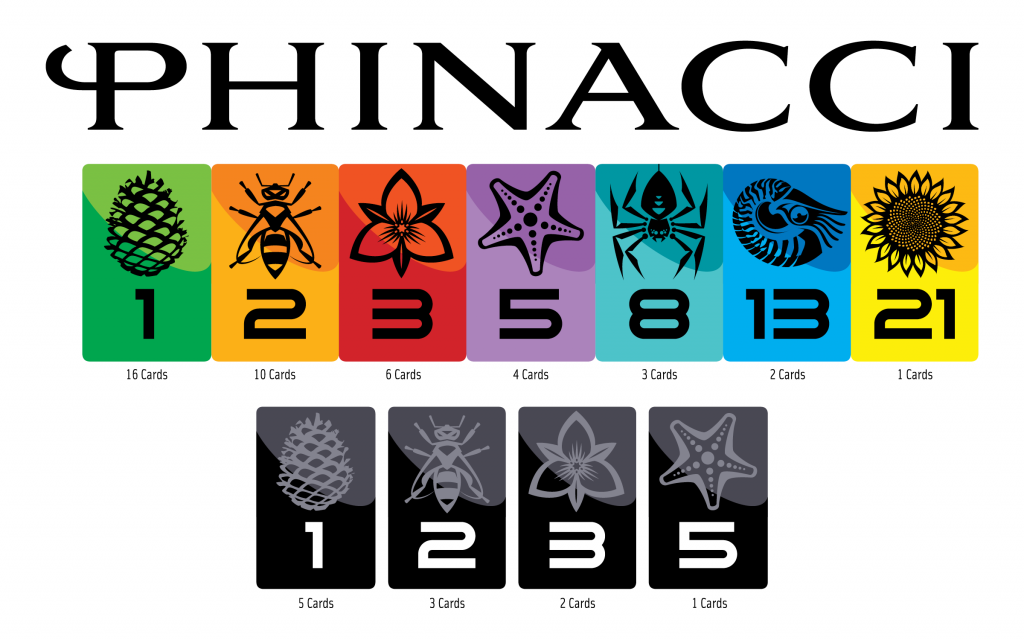Phinacci

Nature’s Card Game: The magic of nature’s patterns can be written in the language of numbers. The Phinacci game has taken that numbering pattern and made a card game out of it.
How to Play: You have two teams, four players, 53 cards, and 144 points needed to win the game. The object is to be the first team to reach 144 points. Each card taken in a pile counts as one point. Teams capture cards in a pile by matching the pile value with the card they throw down onto the pile. There are two groups of cards; colored cards with black numbers and black cards with white numbers. The colored cards are used only in subtracting the number that is on the card from the value of the pile, and the black cards can be used to either add or subtract the number on the card from the pile. If a player does not match the value on the pile then players continue going clockwise to lay down a card until the value is matched. The pile value changes each time a card is placed on the pile. The team (lead team) who lays down the first card of the hand has the advantage of either matching or exceeding the number value on the pile to take it, where as the other team must match the pile value exactly. If neither team has the cards to match or go over (lead team) the value on the pile then the cards go to the (non-lead team), and they become the lead team on the next round. There will be times when a player is unable to place a card and they are skipped to the next player. There will also be times when a player will run out of cards before the other players do.
An example of play: The deck is shuffled and dealt to all four players with one extra card going into the middle face up.Let’s say the extra card is a colored ‘1’. Team A (lead team) easily takes it by throwing a ‘colored 1’ card on top of it. Any card they throw down will take it because all they have to do is match or exceed the pile value. Because there were two cards in the pile they receive two points for their team. The player that takes the pile gets to lead out. Now let’s say the player who took the pile leads out with an ‘8’ card. The player on the left, Team B (non-lead team) member can place an 8 down if they have one and take the pile of two cards to collect two points, or let’s say they choose to throw down a ‘colored 1’ card which subtracts from the existing ‘8’ making the pile value 7. The next person on the left is a member of Team A cannot match that pile number, because there are no ‘7’ in the deck, but because they are the Lead Team they can use an ‘8’ or larger card to take the pile, but it would only be three cards. Let’s say instead they decide to throw down a colored ‘1’ card. Now the pile value is 6 with four cards in the pile. Now let’s say Team B throws down a colored ‘2’ to bring it down to a value of 4. Again there are no ‘4’ cards and the lead team has to either use a ‘5’ card or larger to take it. Let’s say Team A throws down a black ‘5’ and chooses to use that ‘5’ to add to the pile instead of subtracting. Now the pile value is 9 and again there are no ‘9’ cards in the deck, so Team B will be unable to take the pile at this point. Let’s say they throw down an ‘8’ card bringing the pile value to 1. Team A decides to take the pile with a colored ‘1’, thus gaining 7 more point from this pile.. The hand will continued to be played until either all the cards are used up, or nobody is able to play a card. At that point the cards are reshuffled and dealt out with the team taking the last pile leading off. Team B’s strategy is to keep the pile value so high that the other team will not be able to match or exceed its value, thus giving them the pile and becoming the lead team for the next round..
